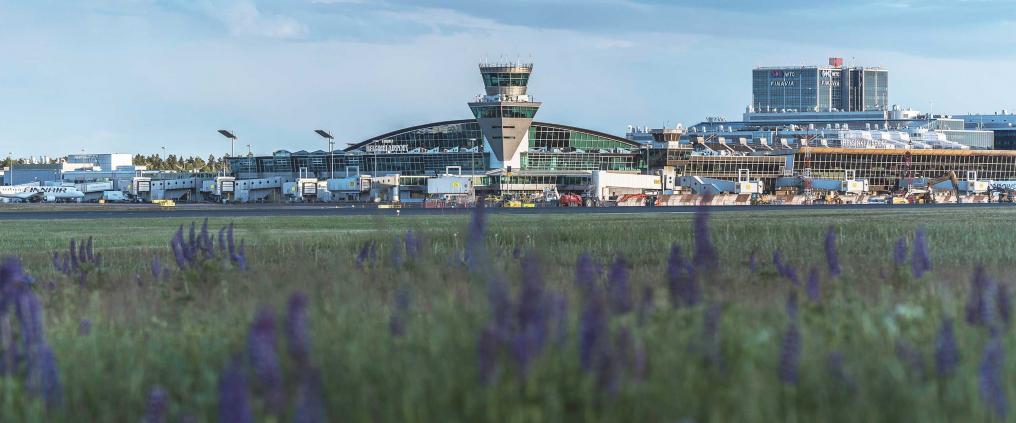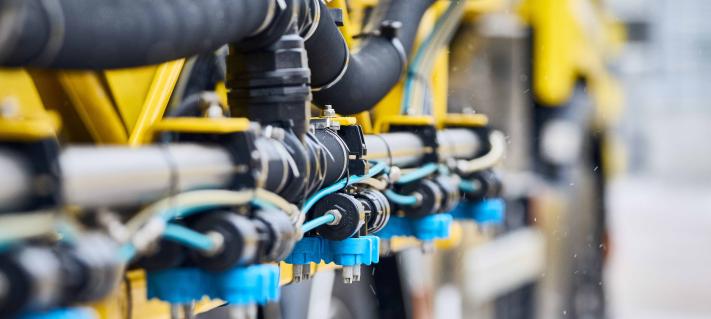Good environmental work is part of Finavia's corporate responsibility. Our Sum of Good Things series highlights details of Finavia's responsibility work. This story is about the airports' emission compensation.
As part of its sustainability programme and the fight against climate change, Finavia is committed to minimising its emissions. For example, in 2017 Helsinki Airport achieved carbon neutrality.
Carbon emissions are reduced by, among other things, using solar power from the airport’s own power plant, waste-based diesel, LED lighting and wind power. The remaining emissions, which cannot be avoided, are compensated by acquiring an equivalent number of carbon credits from the voluntary carbon market.
How does emission compensation function, and what good does it do?
Finavia purchases emission credits through three different companies. This enables Finavia to participate in emission reduction projects complying with the international Gold Standard. One of the projects, which goes by the name Gujarat Biogas, produces clean, affordable energy for households in the state of Gujarat in western India, improving the health of women and children. The project includes 25,000 biogas plants, which produce biogas out of cow manure.
The project has numerous positive effects both socio-economic and environmental:
Giving up cooking on open fire improves the quality of indoor air quality in homes, and health hazards resulting from smoky air are reduced. This improves the health of women and children in particular. Moreover, the new and more hygienic way of handling organic waste improves domestic hygiene and reduces mortality.
In addition to better air quality, environmental impacts of the project include the reduction of deforestation, which is threatening the area’s biodiversity: it is no longer necessary to cut down forests to get firewood. Residual slurry from the plants is utilised as an organic fertiliser in agriculture. As a result, the same patch of land produces more. Greenhouse gas emissions are reduced as non-renewable biomass is replaced with renewable biogas.
Compensation means absolute reduction of emissions
Finavia complies to the Airport Carbon Accreditation (ACA) programme of Airports Council International (ACI), which aims to control carbon emissions. Finavia has succeeded in the reduction of carbon emissions, for example, by switching to wind power which is acquired from Nordic electricity markets. However, not all emissions created by airport operations can be avoided.
To achieve carbon neutrality, the remaining emissions are compensated. In practice, the emissions compensated by Finavia result from heating and the use of fossil fuels in machinery and during business trips, for example. In 2017, a total of 10,000 tonnes of carbon emissions were created.
“To put it simply, carbon compensation means buying carbon credits, which help to reduce carbon emissions in places where it is cost efficient to reduce them. In other words, it’s a matter of absolute reduction of emissions, not of transferring them elsewhere,” explains Mikko Viinikainen, Vice President of Sustainability at Finavia.
Gold Standard ensures results
Finavia’s remaining emissions are compensated according to the international Gold Standard, which has been developed by the World Wildlife Fund for measuring the results of actions aimed at reducing emissions. The standard has been approved by dozens of NGOs, and it is used by the UN, among others.
“Emission reduction projects complying with the standard take several years, and their quality is monitored. Independent auditors are also involved in the verification of the reduction of emissions,” says Johanna Kara, Environmental Specialist at Finavia.
“One carbon credit purchased represents one tonne of carbon dioxide emissions that could not have been reduced or avoided without the project financed through compensation. Each credit is given an ID number and listed in a public register. The credit is issued to the buyer only after the reduction of emissions has been checked and verified,” concludes Kara.




